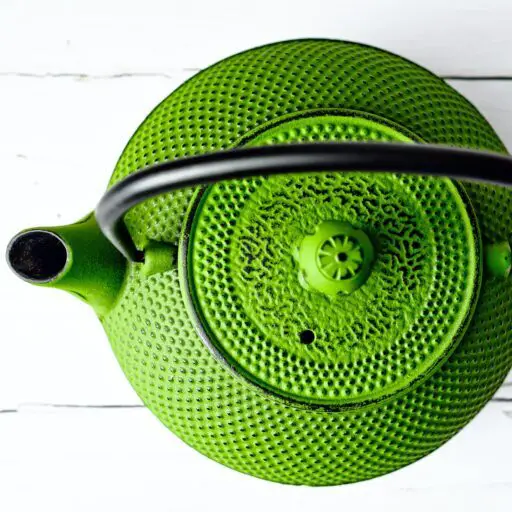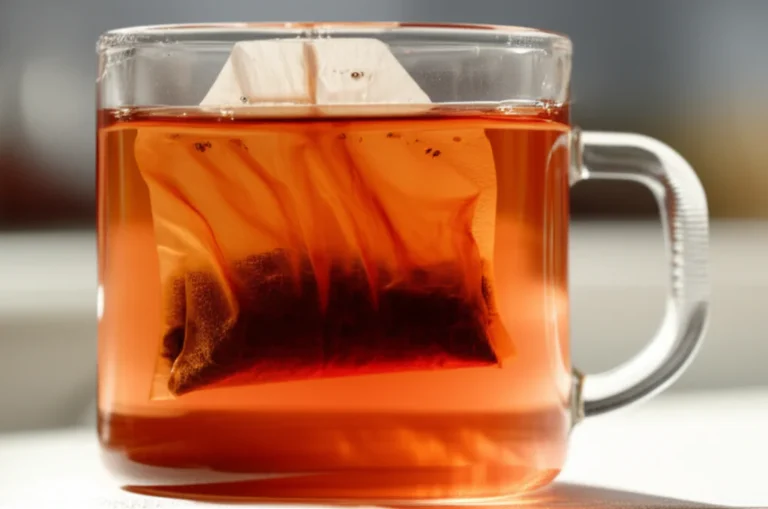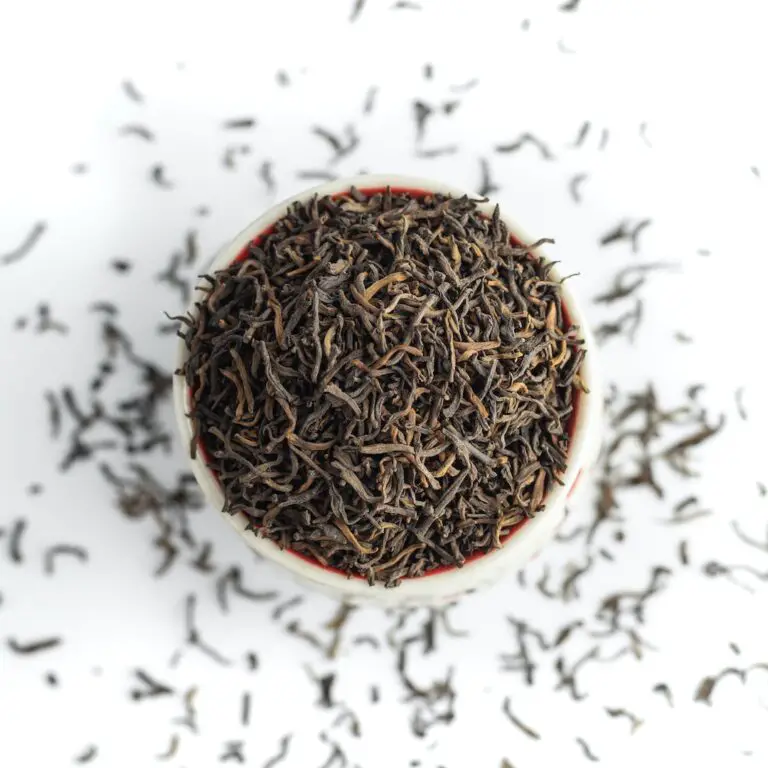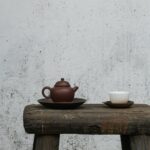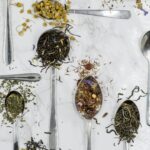Support our educational content for free when you purchase through links on our site. Learn more
Which Is the Most Common Tea? ☕️ Discover the Top 5 (2025)
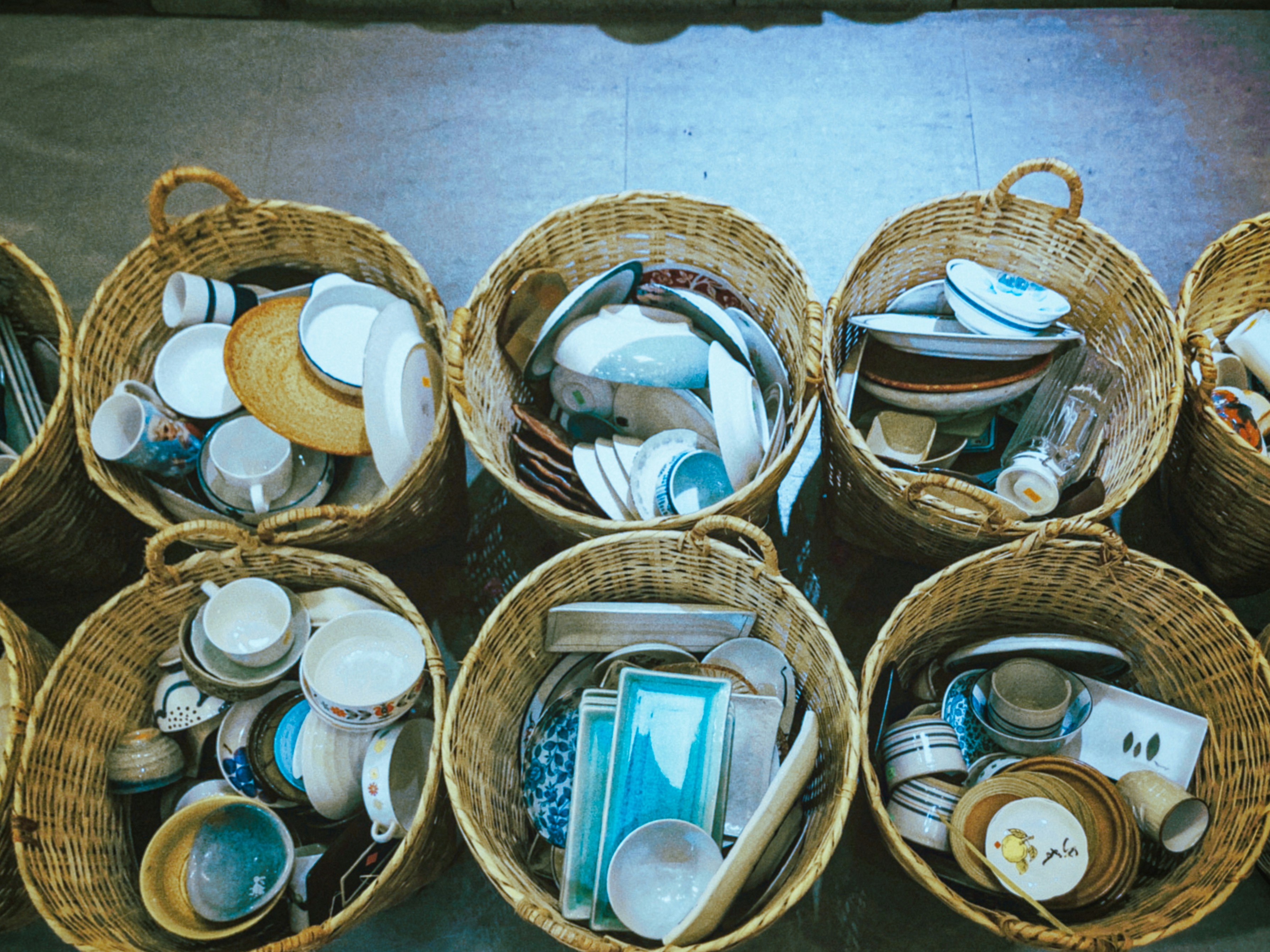
Ever wondered what tea billions around the world sip daily? Spoiler alert: it’s not the fancy matcha or delicate white tea you might expect. As the expert tasters at Tea Brands™ reveal, black tea holds the crown as the most common tea globally, weaving its rich history and bold flavor into countless cultures. But that’s just the beginning! We’ll also explore the fascinating stories behind green, oolong, white teas, and even popular herbal infusions that often get mistaken for “tea.”
Stick around to uncover brewing secrets, health benefits, and insider tips on how to identify your favorite cup. Plus, we’ll share some fun anecdotes—like how iced tea was born out of a heatwave disaster and why Turkey drinks more tea per capita than anywhere else on Earth. Ready to become a tea connoisseur in your own right? Let’s steep into the details!
Key Takeaways
- Black tea is the world’s most consumed tea, favored for its bold flavor, versatility, and cultural significance.
- Green tea follows as a health-boosting favorite, especially in East Asia and among wellness enthusiasts worldwide.
- Oolong and white teas offer unique, nuanced flavors that appeal to adventurous palates but remain niche.
- Herbal infusions (tisanes) are popular caffeine-free alternatives, though not true teas from Camellia sinensis.
- Master the art of brewing with our expert temperature and steeping time guide to unlock the best flavors.
- Explore trusted brands like Twinings, Bigelow, and Harney & Sons for your next perfect cup.
👉 Shop the most common teas here:
- Black Tea: Amazon | Walmart | Twinings Official
- Green Tea: Amazon | Walmart | Ito En Official
- Oolong Tea: Amazon | The Tea Spot Official
Table of Contents
- ⚡️ Quick Tips and Facts About the Most Common Tea
- 🌱 The Origins and History of the Most Common Tea Varieties
- 1. Black Tea: The Global Favorite Explained
- 2. Green Tea: The Ancient Elixir and Its Popularity
- 3. Oolong Tea: The Artful Middle Ground
- 4. White Tea: The Subtle and Rare Delight
- 5. Herbal Tea Infusions: The Common Misconception
- ☕️ How to Identify the Most Common Tea in Your Cup
- 🌍 Global Consumption Trends and Statistics of Common Teas
- 🍵 Brewing Tips for the Most Popular Tea Types
- 🛒 Where to Buy the Most Common Tea: Trusted Brands and Sources
- 💡 Health Benefits and Nutritional Insights of Common Teas
- 🤔 Common Myths and Misunderstandings About Popular Teas
- 🎉 Fun Facts and Anecdotes About the World’s Favorite Tea
- 🔍 How to Choose the Right Tea for You: Expert Recommendations
- 📦 Featured Tea Collections: Our Top Picks for Everyday Enjoyment
- 📞 Customer Support and Tea Enthusiast Communities
- 📝 Conclusion: Which Tea Truly Reigns as the Most Common?
- 🔗 Recommended Links for Tea Lovers
- ❓ FAQ: Your Burning Questions About Common Teas Answered
- 📚 Reference Links and Further Reading
Here is the main body of the article, crafted by the expert team at Tea Brands™.
So, you’re standing in the tea aisle, a veritable wall of colorful boxes staring back at you, and the big question hits: Which is the most common tea? Is it the one your grandma always served? The trendy green stuff everyone’s sipping? Or that fancy blend with the unpronounceable name?
Fear not, fellow tea lover! We, the professional sippers and swishers at Tea Brands™, have steeped, slurped, and studied our way to the answer. We’ve traveled from the misty mountains of Darjeeling to the bustling tea houses of London to bring you the definitive guide. The answer might surprise you, but the journey to discovering it is half the fun. Let’s dive in! If you’re looking for a broader overview, you should also check out our guide on Which Type of Tea Is the Best? ☕️ Discover 14 Must-Try Brews (2025).
⚡️ Quick Tips and Facts About the Most Common Tea
Pressed for time? Here’s the tea, served hot and fast.
- The Undisputed Champion: Globally, black tea is the most consumed type of tea, accounting for an estimated 78% to 85% of total tea consumption. Yes, that simple, robust brew is the world’s favorite!
- One Plant to Rule Them All: All “true” teas (black, green, oolong, white, and pu-erh) come from a single plant species: Camellia sinensis. The difference is all in the processing! 🧑🔬
- The “Herbal” Impostor: What about chamomile or peppermint? While we love them, they aren’t technically “tea.” They’re tisanes or herbal infusions, made from various herbs, spices, and plants other than Camellia sinensis.
- Water is #1: Tea is the second most consumed beverage in the world, right after water. Take that, coffee! 💧
- Caffeine Check: Black tea generally has more caffeine than green tea, but both have significantly less than a standard cup of coffee. Perfect for a gentle lift without the jitters.
🌱 The Origins and History of the Most Common Tea Varieties
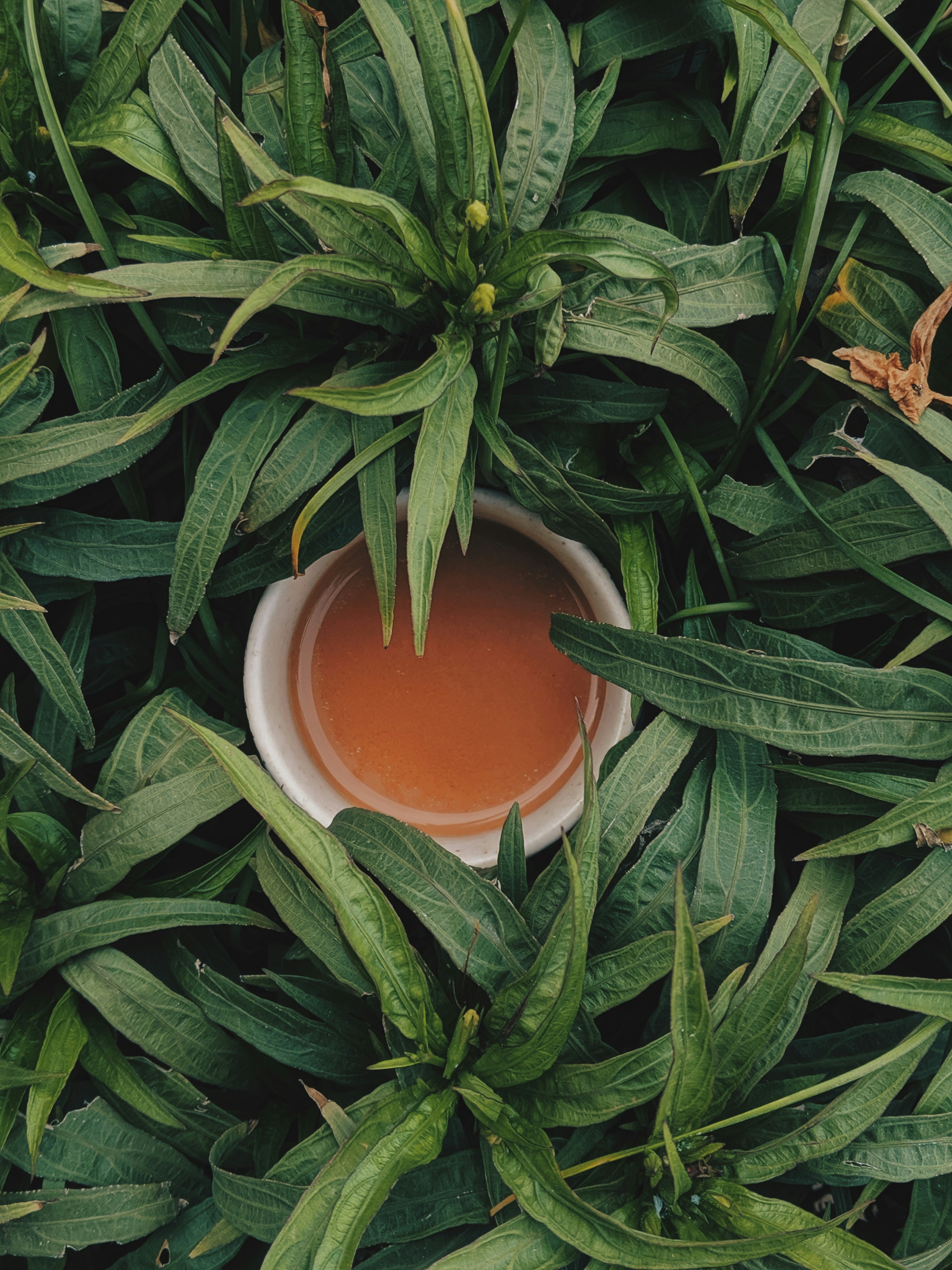
Every cup of tea tells a story, a tale that began thousands of years ago. Legend has it that in 2737 BC, the Chinese emperor Shen Nung was resting under a tree while his servant boiled drinking water. A few leaves from a wild tea tree, our beloved Camellia sinensis, drifted into the pot. The emperor, a renowned herbalist, decided to try the infusion. He found it refreshing, and just like that, tea was born!
For centuries, tea was a closely guarded secret in China, primarily used as a medicinal elixir. The leaves were steamed and pressed into cakes for easy transport. It wasn’t until the Tang Dynasty (618-907 AD) that tea became a popular social drink.
How Black Tea Took Over the World
So how did black tea become the global heavyweight? The journey involves trade routes, empires, and a little bit of chemistry.
When China began trading tea with European countries in the 17th century, they discovered something amazing. The long sea voyages required the tea leaves to be processed differently to preserve them. They allowed the leaves to oxidize fully—a process where the enzymes in the leaves react with oxygen. This turned the leaves dark brown/black and created a deeper, maltier, more robust flavor that was less prone to spoilage.
The British, in particular, fell head over heels for this dark, strong brew. They started adding a splash of milk and a spoonful of sugar, creating a cultural phenomenon. They established vast tea plantations in India (Assam, Darjeeling) and Sri Lanka (Ceylon) to break the Chinese monopoly, cementing black tea’s dominance across their empire and, eventually, the world.
1. Black Tea: The Global Favorite Explained
Welcome to the king of the tea world. If tea were a rock band, black tea would be The Rolling Stones—classic, universally loved, and still rocking hard. It’s the familiar, comforting brew that powers mornings and punctuates afternoons from Dublin to Delhi.
Flavor Profile
Black tea is fully oxidized, which gives it its characteristic dark color and bold flavor. Depending on the region and blend, the taste can range from malty and smoky to sweet and fruity. Think of the robust punch of an Irish Breakfast or the delicate, floral notes of a Darjeeling. It’s the most versatile of the bunch.
Popular Brands and Blends
You’ve definitely seen these names before. They are the titans of the tea world.
- English Breakfast: A blend of Assam, Ceylon, and Kenyan teas. Strong, full-bodied, and perfect with milk. Twinings is the quintessential brand here.
- Earl Grey: Black tea infused with the oil of bergamot orange. It’s citrusy, floral, and aromatic. A favorite of our taster, Chloe, who calls it “sunshine in a cup.” Harney & Sons makes a sublime version.
- “Constant Comment”®: As Bigelow proudly states, this is “a taste that has been enjoyed for generations.” It’s a delightful mix of black tea, orange rind, and sweet spices. A true American classic.
- Assam: From India, this tea is known for its strong, malty, and sometimes tannic character. It’s the backbone of many breakfast blends.
Why It’s So Common
✅ Robust Flavor: Its strong taste stands up well to milk, sugar, lemon, and spices, making it highly adaptable to local tastes.
✅ Durability: The full oxidation process makes it more stable than green tea, giving it a longer shelf life—a huge advantage in the early days of global trade.
✅ Cultural Tradition: From British afternoon tea to Indian Masala Chai, black tea is deeply woven into the cultural fabric of many of the world’s most populous nations.
2. Green Tea: The Ancient Elixir and Its Popularity
If black tea is the king, green tea is the wise, ancient sage. It’s the original—the closest you can get to sipping a fresh leaf straight from the Camellia sinensis plant. Its popularity has surged in the West recently, but in Asia, it’s been the go-to for millennia.
Flavor Profile
Green tea is unoxidized. The leaves are quickly heated after harvesting (either by pan-firing or steaming) to prevent oxidation. This preserves their green color and fresh, vibrant flavor. Tastes can range from grassy and vegetal (like a Japanese Sencha) to nutty and sweet (like a Chinese Dragon Well). As the experts at Erudus note, it’s “generally less bitter and lighter than black tea.”
Popular Brands and Blends
- Sencha: The most popular tea in Japan. It’s steamed, giving it a slightly grassy, oceanic (umami) flavor. Ito En is a fantastic, accessible brand.
- Matcha: A finely ground powder of specially grown and processed green tea leaves. Instead of steeping, you whisk the powder into water. It’s vibrant, rich, and packed with energy.
- Jasmine Green Tea: Green tea leaves are scented with jasmine blossoms, creating an intoxicatingly floral and fragrant brew. A staple in Chinese restaurants for a reason!
- Gunpowder: The leaves are rolled into small pellets resembling gunpowder, which unfurl in hot water. It has a slightly smoky, bold flavor.
Why It’s So Common
✅ Health Halo: Green tea is lauded for its health benefits, packed with antioxidants like EGCG. This has driven its massive popularity in health-conscious circles.
✅ Cultural Significance: It’s central to tea ceremonies in Japan and is the most consumed tea throughout China and much of East Asia.
✅ Refreshing Taste: Its light, clean flavor profile makes it a perfect palate cleanser and a refreshing drink, hot or iced.
3. Oolong Tea: The Artful Middle Ground
Ever felt like you couldn’t decide between black or green tea? Meet oolong, the beautiful chameleon of the tea world. It’s partially oxidized, meaning it can lean towards the fresh, green end of the spectrum or the dark, toasty end of the black tea spectrum. It represents only about 2% of the world’s tea, but its complexity makes it a favorite among connoisseurs.
Flavor Profile
This is where it gets fun! Oolong’s flavor is a spectrum.
- Lightly Oxidized (10-30%): These are often called “green oolongs.” They are floral, creamy, and sweet, reminiscent of orchids or honeysuckle. Think Tie Guan Yin (Iron Goddess of Mercy).
- Heavily Oxidized (50-80%): These “dark oolongs” are roasty, nutty, and fruity, with notes of honey, chocolate, or baked fruit. Da Hong Pao (Big Red Robe) is a famous example.
Popular Brands and Blends
- Tie Guan Yin (Iron Goddess of Mercy): A legendary Chinese oolong with a captivating floral aroma and a sweet, lingering finish.
- Da Hong Pao (Big Red Robe): A rock oolong from the Wuyi Mountains. It’s complex, with mineral, roasted, and fruity notes.
- Milk Oolong (Jin Xuan): A Taiwanese variety famous for its naturally creamy, milky, and buttery flavor. No milk is added! The Tea Spot offers a delightful version.
Why It’s Gaining Popularity
✅ Incredible Complexity: For the adventurous tea drinker, oolong offers a universe of flavors to explore.
✅ Re-steepable: High-quality oolong leaves can be steeped multiple times, with the flavor evolving in each infusion. It’s the gift that keeps on giving!
✅ The “In-Between” Appeal: It bridges the gap for those who find green tea too light and black tea too strong.
4. White Tea: The Subtle and Rare Delight
If oolong is the chameleon, white tea is the unicorn. It’s the least processed of all teas, made from the youngest, most tender buds and leaves of the Camellia sinensis plant. These buds are often covered in fine, silvery-white hairs, which give the tea its name.
Flavor Profile
White tea is prized for its subtlety, delicacy, and natural sweetness. It is never bitter or bold. Instead, you’ll find gentle notes of melon, apricot, vanilla, and flowers. It’s a whisper, not a shout. As Real Simple puts it, it has a “light, delicate tea with floral notes.”
Popular Brands and Blends
- Silver Needle (Bai Hao Yin Zhen): The highest grade of white tea, made exclusively from unopened buds. It’s sweet, delicate, and velvety.
- White Peony (Bai Mu Dan): Includes both buds and the top two leaves. It has a slightly fuller body than Silver Needle, with a floral, fruity flavor. Vahdam Teas has some excellent options.
Why It’s a Niche Favorite
✅ Minimal Processing: It’s the closest to the natural state of the tea leaf, which many believe preserves the highest level of antioxidants.
✅ Low Caffeine: It generally has the lowest caffeine content of all true teas, making it perfect for a relaxing evening cup.
✅ Exquisite Delicacy: For those with a refined palate, the subtle nuances of white tea are a true luxury.
5. Herbal Tea Infusions: The Common Misconception
Okay, let’s clear this up once and for all. We get this question constantly at our Tea Brand Guides workshops. Are chamomile and peppermint tea?
Answer: ❌ No!
They are tisanes, or herbal infusions. The word “tea” technically only applies to beverages made from Camellia sinensis. Tisanes are made by infusing herbs, flowers, spices, or fruits in hot water.
Why Are They So Popular?
Despite not being “true tea,” herbal infusions are incredibly common and beloved for good reason.
- Chamomile: The ultimate bedtime brew, known for its calming, apple-like flavor.
- Peppermint: Zesty, refreshing, and fantastic for aiding digestion.
- Rooibos (Red Bush): A South African herb with a naturally sweet, nutty, and earthy flavor. It’s caffeine-free and rich in antioxidants.
- Ginger: Spicy, warming, and a go-to for soothing an upset stomach.
They are popular because they offer a huge range of flavors and are naturally caffeine-free, making them a perfect choice for any time of day, especially for those looking to unwind.
☕️ How to Identify the Most Common Tea in Your Cup
Ever been served a cup of tea and wondered what it was? Put on your taster’s hat! Here’s a simple guide from our lab to help you identify the brew.
| Feature | Black Tea | Green Tea | Oolong Tea | White Tea |
|---|---|---|---|---|
| Dry Leaf Appearance | Dark brown to black, often small, broken pieces. | Green to yellowish, can be flat, rolled, or twisted. | Varies from green to dark brown, often large, tightly rolled balls. | Silvery-white buds, sometimes with pale green leaves. |
| Liquor Color | Amber to reddish-brown, dark and deep. | Pale green to golden-yellow, clear. | Golden-yellow to amber-brown, can be very light or dark. | Very pale yellow to light gold, almost translucent. |
| Aroma | Malty, fruity, smoky, robust. | Grassy, vegetal, oceanic, nutty. | Floral, fruity, creamy, toasty, complex. | Delicate, floral, sweet, hay-like. |
| Flavor | Strong, bold, brisk, sometimes astringent. | Fresh, light, sometimes savory (umami) or sweet. | A wide spectrum from light and floral to dark and roasted. | Subtle, mellow, naturally sweet, non-astringent. |
Next time you’re at a café, give it a try! Smell the dry leaves, observe the color, and take a thoughtful sip. You’ll be a pro in no time.
🌍 Global Consumption Trends and Statistics of Common Teas
Don’t just take our word for it. The numbers don’t lie. Black tea’s reign is backed by some serious data.
According to the Food and Agriculture Organization of the United Nations (FAO), global tea consumption has been steadily rising. In 2021, the world consumed approximately 6.4 million tonnes of tea.
- Black Tea Dominance: While exact percentages fluctuate, black tea consistently makes up the lion’s share of this consumption, estimated to be around 78%. This is driven by massive consumption in countries like India, Turkey, the UK, Russia, and Pakistan.
- Green Tea’s Growth: Green tea accounts for a smaller but rapidly growing portion, around 20%. Its growth is fueled by its popularity in China and Japan and its increasing adoption in Western countries for its health benefits.
- The Niche Players: Oolong and white tea make up the remaining sliver of the pie, cherished by enthusiasts but not consumed on the same mass scale.
What does this mean for you? It means that the simple cup of Lipton or PG Tips you’re drinking is part of a massive global tradition!
🍵 Brewing Tips for the Most Popular Tea Types
Are you committing a tea crime? Using boiling water for your delicate green tea is a cardinal sin in our book! Brewing tea is an art, but it’s one you can easily master. Using the right temperature and time unlocks the true flavor of the leaves and prevents bitterness.
Here is our ultimate brewing chart, pinned up in the Tea Brands™ tasting room.
| Tea Type | Water Temperature | Steep Time | Our Expert Taster’s Tip 💡 |
|---|---|---|---|
| Black Tea | 200-212°F (93-100°C) | 3-5 minutes | Don’t be afraid to go for a full boil! The robust leaves can handle the heat. For a stronger “builder’s tea,” let it steep for the full 5 minutes. |
| Green Tea | 170-180°F (77-82°C) | 1-3 minutes | Crucial: Never use boiling water! It will scorch the leaves and make the tea bitter. If you don’t have a variable temp kettle, let boiled water sit for 2-3 minutes before pouring. |
| Oolong Tea | 195°F (90°C) | 1-5 minutes | Oolong is for experimenting! Start with a short steep (1 min), then re-steep for longer. The flavor will change beautifully. |
| White Tea | 175-180°F (80-82°C) | 2-5 minutes | Treat these delicate buds with care. A lower temperature and a longer, gentle steep will coax out their subtle, sweet flavors. |
| Herbal Infusion | 212°F (100°C) | 5-7 minutes | Most herbs and flowers are tough and need boiling water and a long steep time to fully release their flavors and beneficial compounds. |
🛒 Where to Buy the Most Common Tea: Trusted Brands and Sources
Ready to stock your pantry? Navigating the world of tea brands can be overwhelming, but we’ve got your back. Here are some of our trusted favorites for the most common tea types, from everyday staples to affordable luxuries.
For Classic Black Teas:
- Twinings English Breakfast: The quintessential breakfast tea. Robust, balanced, and reliable.
- 👉 Shop on: Amazon | Walmart | Twinings Official Website
- Harney & Sons Earl Grey Supreme: A step up from the standard, with a brighter bergamot flavor and higher quality leaves.
- 👉 Shop on: Amazon | Walmart | Harney & Sons Official Website
For Vibrant Green Teas:
- Yamamotoyama Green Tea: An excellent and authentic choice for everyday Japanese-style green tea. Smooth and not too grassy.
- Tazo Zen Green Tea: A popular blend of green tea with lemongrass and spearmint. Refreshing and widely available.
- 👉 Shop on: Amazon | Walmart | Tazo Official Website
For Exploring Oolong & White Teas:
- The Tea Spot Milk Oolong: A fantastic introduction to the creamy, floral world of oolong.
- 👉 Shop on: Amazon | The Tea Spot Official Website
💡 Health Benefits and Nutritional Insights of Common Teas
Beyond its delightful taste, one of the main reasons for tea’s enduring popularity is its association with wellness. For a deep dive, check out our entire category on the Health Benefits of Tea.
All true teas are packed with powerful plant compounds called polyphenols, particularly a type called flavonoids. These act as antioxidants, fighting cell damage in the body.
Black Tea Benefits
It’s not just a morning kick-starter! Black tea contains flavonoids that are linked to improved heart health. Studies, like one published in the journal Circulation, suggest that regular consumption may help reduce the risk of heart attack and stroke. It also contains L-theanine, an amino acid that can promote alertness and focus without the harsh crash of coffee.
Green Tea Benefits
Green tea is the superstar of tea-related health research. It’s particularly rich in a powerful catechin called epigallocatechin-3-gallate (EGCG). According to the Harvard T.H. Chan School of Public Health, these compounds may have protective effects against certain cancers and can support brain health.
A Quick Comparison
| Benefit | Black Tea | Green Tea | Oolong Tea |
|---|---|---|---|
| Heart Health | ✅✅✅ | ✅✅ | ✅✅ |
| Antioxidant Power | High | Very High | High |
| Brain Focus (L-theanine) | ✅✅ | ✅✅✅ | ✅✅ |
| Metabolism Support | Moderate | High | High |
A friendly reminder from our team: While tea is wonderfully healthy, it’s not a magic potion. It’s one part of a balanced, healthy lifestyle!
🤔 Common Myths and Misunderstandings About Popular Teas
Let’s play a game of true or false. We hear these all the time, and it’s time to set the record straight.
-
Myth 1: “You must add milk to black tea.”
- ❌ FALSE! While it’s a popular tradition in places like the UK, many high-quality black teas, especially Darjeeling (the “champagne of teas”), are best enjoyed plain to appreciate their delicate notes. As Erudus advises, “most aficionados do not drink Darjeeling with milk.”
-
Myth 2: “Tea has more caffeine than coffee.”
- ❌ FALSE! By dry weight, tea leaves do have more caffeine than coffee beans. But you use far less tea leaf by weight to make a cup of tea than you do coffee grounds for a cup of coffee. The result? A standard 8oz cup of coffee has 95-200mg of caffeine, while black tea has 40-70mg and green tea has 30-50mg.
-
Myth 3: “Herbal tea is calming, and black tea is energizing.”
- ✅ KINDA TRUE! This is generally correct. Most herbal teas like chamomile and lavender are caffeine-free and contain compounds that promote relaxation. Black tea contains caffeine for energy. However, it also contains L-theanine, which has a calming and focusing effect on the mind, leading to a state of “calm alertness” rather than a jittery buzz.
🎉 Fun Facts and Anecdotes About the World’s Favorite Tea
One of my favorite memories as a junior taster was visiting an Assam tea estate in India. I expected a very prim and proper affair, but what I found was pure, unadulterated passion. The estate manager, a man named Raj, didn’t just talk about his tea; he sang about it. He explained how the “second flush” (the summer harvest) produces the most prized, malty “tippy” teas. He had me chew on a fresh leaf, which was shockingly bitter, to demonstrate just how much magic happens during oxidation. It taught me that every cup of simple black tea is the result of immense care and a rich history.
Here are a few more tidbits to share at your next tea party:
- The Accidental Tea Bag: The tea bag was invented by accident in 1908 by a New York tea merchant named Thomas Sullivan. He sent samples of his tea to clients in small silk pouches. They, assuming they were supposed to, dunked the whole bag in hot water. The rest is history!
- Iced Tea’s Big Debut: Iced tea was popularized at the 1904 St. Louis World’s Fair. A tea plantation owner named Richard Blechynden was struggling to sell his hot tea during a heatwave. In a moment of desperation, he poured it over ice, and the crowds went wild.
- Turkey’s Tea Obsession: You might think the British drink the most tea, but per capita, Turkey is the world champion, with the average Turk consuming around 3.16 kg of tea per year!
🔍 How to Choose the Right Tea for You: Expert Recommendations
So, with all this information, how do you find your perfect common tea? Think of us as your personal tea sommeliers.
-
If you’re a die-hard coffee drinker looking for an alternative…
- Try: A bold Assam or an Irish Breakfast blend. Their strong, malty, and robust character can satisfy the craving for a dark, intense beverage.
-
If you want a gentle afternoon pick-me-up without the jitters…
- Try: Earl Grey or a second-flush Darjeeling. The L-theanine combined with moderate caffeine will give you focus and energy, while the delightful aromatics are a treat for the senses.
-
If you’re looking for a healthy, refreshing drink for all-day sipping…
- Try: A classic Japanese Sencha or a Jasmine Green Tea. They are light, cleansing, and packed with goodness. Perfect hot or iced.
-
If you want something complex and interesting to savor…
- Try: An Oolong, like a creamy Milk Oolong or a toasty Tie Guan Yin. It’s a journey in a cup that will challenge and delight your palate.
-
If you need to unwind and de-stress at the end of the day…
- Try: A caffeine-free Chamomile or Rooibos herbal infusion. They are the liquid equivalent of a cozy blanket.
📦 Featured Tea Collections: Our Top Picks for Everyday Enjoyment
Sometimes the best way to find your favorite is to try a few. Many brands offer fantastic sampler packs that let you explore the world of tea. These make great gifts, too!
- Bigelow Tea’s “Most Popular” Collection: You can’t go wrong starting here. As their website says, this collection features their best-sellers, including the iconic “Constant Comment”®, classic Green Tea, and soothing Chamomile. It’s a perfect snapshot of what American tea drinkers love. You can explore their offerings in our Tea Brand Spotlights.
- Harney & Sons Black Tea Sampler: For those who want to dive deep into the world’s most common tea, this is a must. You’ll often find classics like English Breakfast, Hot Cinnamon Spice, and Paris in their collections, showcasing the incredible diversity within black tea.
- Vahdam Teas Turmeric Herbal Tea Sampler: If you’re venturing into the world of Specialty Blends and tisanes, Vahdam offers incredible collections based on Ayurvedic principles, often featuring vibrant and healthy ingredients like turmeric and ginger.
📞 Customer Support and Tea Enthusiast Communities
Your tea journey doesn’t have to be a solo one! The world of tea is filled with passionate, friendly people who love to share their knowledge.
A great tea brand doesn’t just sell tea; they offer support and build a community. Brands like Harney & Sons and The Tea Spot are known for their excellent customer service and detailed websites, which are treasure troves of information.
Want to connect with other tea lovers?
- Reddit’s r/tea: A massive and active community where people share their “tea mail,” ask for brewing advice, and post beautiful pictures of their daily cups.
- Steepster: A social network and review site for tea. You can log the teas you’ve tried, read reviews from thousands of other users, and discover new brands.
Don’t be shy! The tea community is one of the most welcoming places on the internet.
📝 Conclusion: Which Tea Truly Reigns as the Most Common?
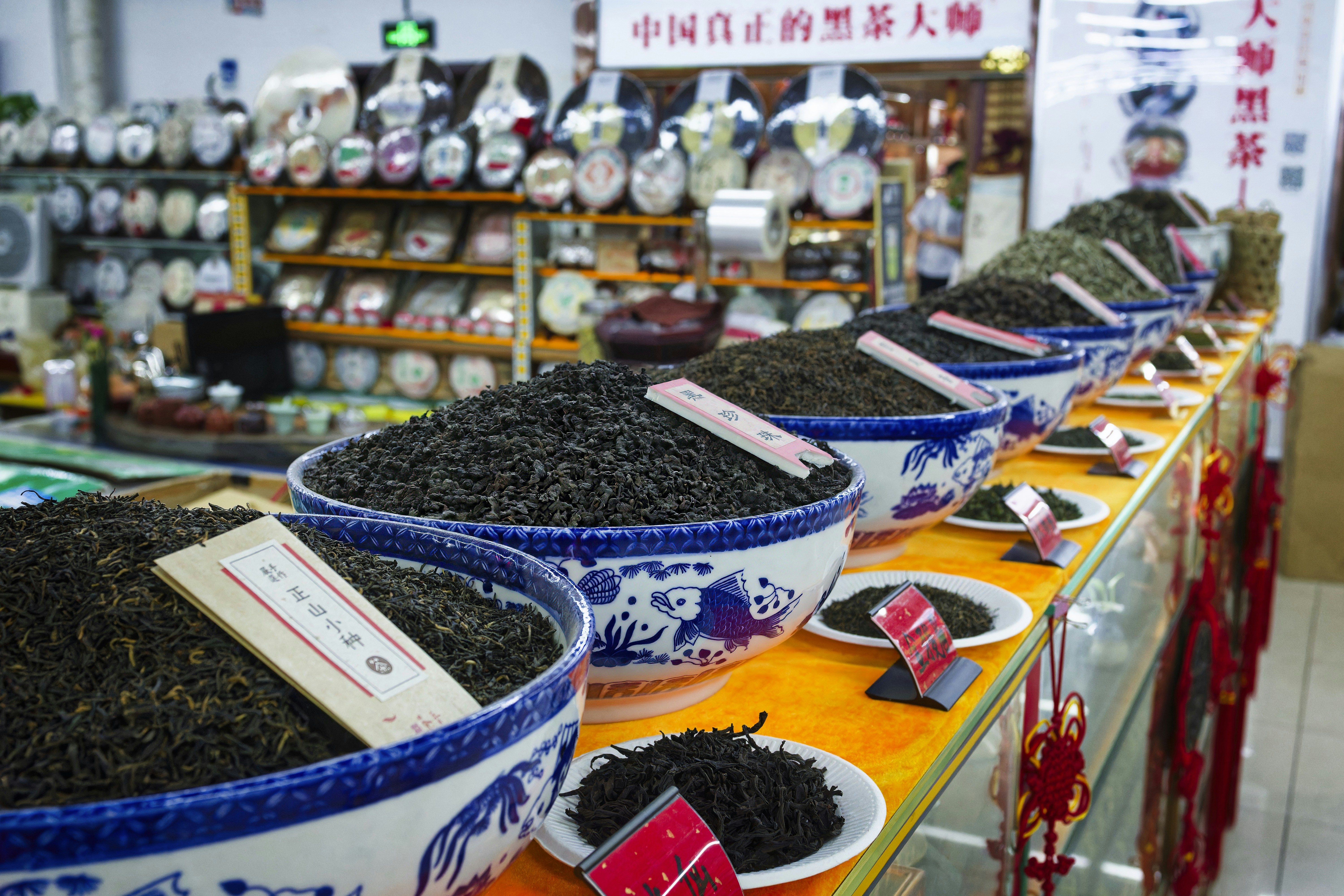
After our deep dive into the world of tea, the verdict is clear: black tea is the most common tea globally. Its robust flavor, cultural significance, and historical role in global trade have cemented its place in millions of cups every day. Whether it’s a strong English Breakfast, a fragrant Earl Grey, or the iconic “Constant Comment”® from Bigelow, black tea’s versatility and enduring appeal make it the undisputed champion.
But don’t count out green tea, oolong, or white tea! Each brings its own unique charm and health benefits, catering to different tastes and lifestyles. And while herbal infusions aren’t technically “tea,” their popularity continues to soar, offering caffeine-free alternatives that many enjoy daily.
So next time you sip your cuppa, remember: you’re part of a rich, global tradition that spans centuries and continents. Whether you prefer the boldness of black tea or the delicate notes of white, there’s a perfect brew waiting for you.
Ready to explore? Dive into our recommended collections and find your new favorite today!
🔗 Recommended Links for Tea Lovers
Explore and shop some of the most beloved teas and collections we’ve discussed:
-
Bigelow Tea’s Most Popular Collection:
Amazon | Walmart | Bigelow Official Website -
Twinings English Breakfast Tea:
Amazon | Walmart | Twinings Official Website -
Harney & Sons Earl Grey Supreme:
Amazon | Walmart | Harney & Sons Official Website -
The Tea Spot Milk Oolong:
Amazon | The Tea Spot Official Website -
Vahdam Teas White Tea:
Amazon | Vahdam Official Website -
Books on Tea:
The Story of Tea: A Cultural History and Drinking Guide by Mary Lou Heiss & Robert J. Heiss — Amazon
The Tea Enthusiast’s Handbook by Mary Lou Heiss — Amazon
❓ FAQ: Your Burning Questions About Common Teas Answered
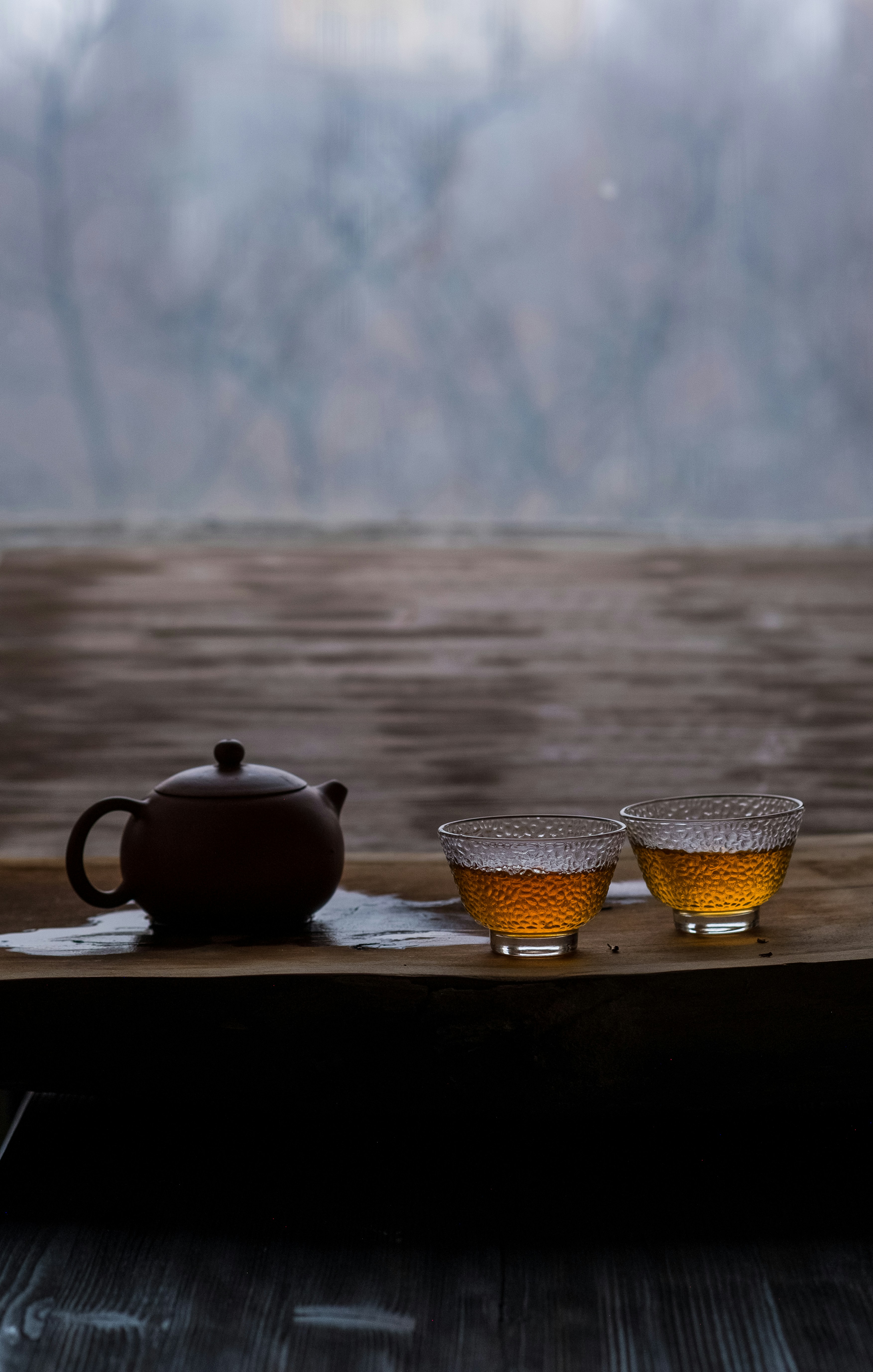
What are the top 5 most consumed teas worldwide?
The top five most consumed teas globally are:
- Black Tea – The leader by far, favored for its bold flavor and cultural ubiquity.
- Green Tea – Popular especially in East Asia, prized for its health benefits and delicate taste.
- Oolong Tea – A niche but growing favorite, especially in China and Taiwan, known for its complex flavor spectrum.
- White Tea – Less common but gaining attention for its subtlety and antioxidant content.
- Herbal Infusions (Tisanes) – While not true teas, herbal blends like chamomile and rooibos are widely consumed worldwide.
This ranking is supported by global production and consumption data from the FAO and tea industry reports.
Read more about “🌟 15 Best-Selling Tea Brands in the World (2025)”
How does black tea compare to green tea in terms of popularity?
Black tea dominates global consumption, making up roughly 78% of all tea consumed worldwide. This is due to its historical role in trade, cultural integration (especially in Europe, South Asia, and Africa), and its robust flavor that appeals to a broad audience.
Green tea, while immensely popular in East Asia, accounts for about 20% of global consumption. Its rise in Western markets is driven by health-conscious consumers attracted by its antioxidant properties.
In short:
- Black tea = global staple, everyday drink for billions.
- Green tea = regional powerhouse with growing international appeal.
Read more about “What Are the 12 Most Popular Tea Types? 🍵 (2025 Guide)”
What is the most popular type of tea in the United States?
In the U.S., black tea remains the most popular type, especially blends like English Breakfast and Earl Grey. However, green tea and herbal teas have seen significant growth due to health trends.
Brands like Bigelow and Twinings dominate supermarket shelves with their black tea blends, while specialty stores and cafes increasingly offer matcha and herbal infusions.
Read more about “15 Famous Tea Brands USA You Must Try in 2025 🍵”
Are herbal teas as widely consumed as traditional teas like black, green, or oolong?
No, herbal teas (tisanes) are not as widely consumed as traditional teas made from Camellia sinensis. However, their popularity is growing rapidly, especially among those seeking caffeine-free or medicinal options.
Herbal infusions like chamomile, peppermint, and rooibos are staples in many households worldwide, often consumed in the evening or for specific health benefits. But in terms of sheer volume, black and green teas still lead the pack.
How can I tell if a tea is truly black, green, or something else?
Look for these clues:
- Labeling: Most reputable brands clearly state the tea type.
- Leaf appearance: Black tea leaves are dark and fully oxidized; green tea leaves are green and steamed or pan-fired; oolong leaves are partially oxidized and often rolled.
- Flavor: Black tea is bold and malty; green tea is fresh and vegetal; oolong varies widely but often has floral or roasted notes.
For more tips, visit our Tea Brand Guides.
📚 Reference Links and Further Reading
- Bigelow Tea Most Popular Collection
- Erudus: The Food Agenda – Most Famous Teas
- Real Simple: 10 Most Popular Types of Tea and Their Health Benefits
- FAO Tea Market Report
- Harvard T.H. Chan School of Public Health: Tea and Health
- Twinings Official Website
- Harney & Sons Official Website
- The Tea Spot Official Website
- Vahdam Teas Official Website
We hope this guide has brewed up your curiosity and helped you find clarity on the most common tea. Now, go forth and sip with confidence! 🍵
